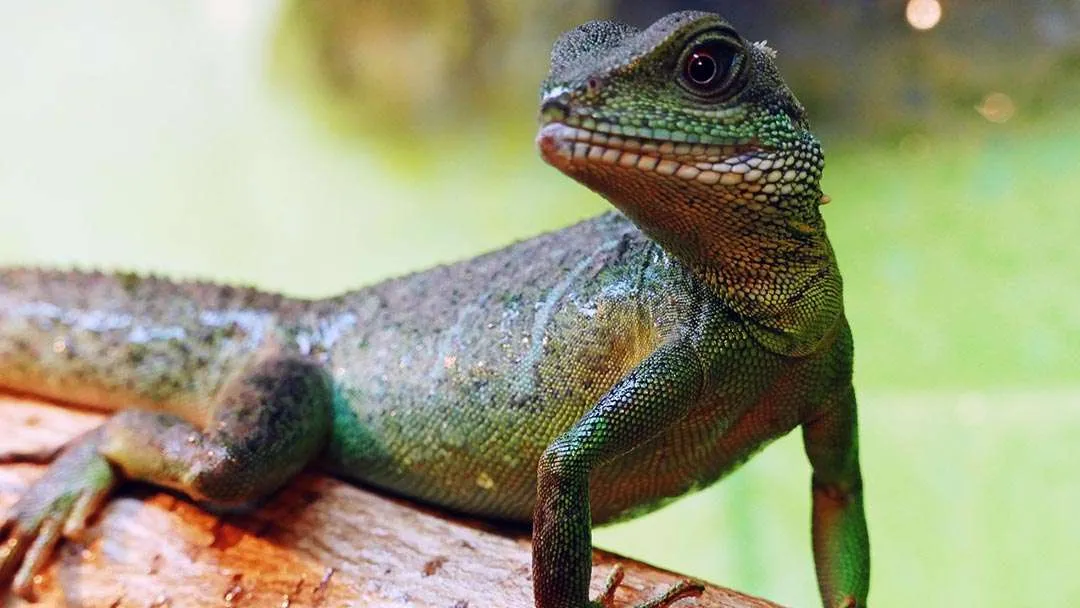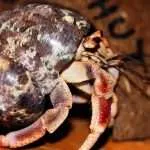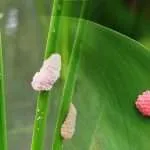So you’re wondering, a water dragon as a pet! Well, the Chinese Water Dragon is no dragon at all, it is just a lizard, interesting right?
The Chinese Water Dragon is known also as Asian, Green and Thai Water-Dragon. Familiar with the animal yet? Good. If not, continue reading, you’re about to meet the Chinese Water Dragon.
The Chinese Water Dragon is found mostly in China (of course, that’s where it found its name) and India. You see them in lowlands, high forests and freshwater environment.
It is a colourful animal with varying colours such as green, yellow, pale brown and white.
They can be kept as pets but require a lot of resources to build a habitat that resembles their natural habitat.
A Complete Beginners Species Guide to Chinese Water Dragon
Here are beginners guide to answer your inquisitive mind.
History of the Chinese Water Dragon
The Chinese Water Dragon – known by its other names Asian, Green and Thai Water Dragon – is a native of East and Southeast Asia and is found mostly in China and India.
The Chinese Water Dragon is semi-aquatic. You find them in lowlands and highland forests and also freshwater environments – freshwater lakes and streams.
There are no other recognized subspecies of the Chinese Water Dragon. However, there are other similar lizard species, the closest genetic relative being the Australian Water Dragon.
By nature, the Chinese Water Dragon is diurnal. Just like humans, the animal is more active during the day and sleep at night. The opposite of diurnal is nocturnal – meaning animals (or human beings) that are active at night and sleep during the day.

Overview
The Chinese Water Dragon is a species belonging to the agamid lizard – a family of over 300 species of iguana lizards found in Africa, Asia, Southern Europe and Australia.
| Phylum | Chordata |
| Class | Reptile |
| Family | Agamidae |
| Order | Squamata |
| Suborder | Iguania |
Description
The Chinese Water Dragon is a colourful animal with different colours varying from green, yellow and dark brown. Its head is triangular with colours between light green and dark green. The tail – which contributes a larger part of its entire body is dark green or dark brown.
The belly is white, pale green or pale yellow. The most attractive part of the Chinese Water Dragon is its throat which is bright orange or yellow.
Another important feature of the Chinese Water Dragon is its third eyes. Located between its eyes is a small, iridescent, photosensitive spot. This is called the pineal eye or third eye. This eye helps them with thermoregulation i.e it help with regulating body temperature by sensing differences in light. This feature also helps them to know sunshine and sunset and awakens them from a deep sleep.
Size
The Chinese Water Dragon is made up majorly of head, belly and tail. The tail comprises about 70 percent of its entire body.
On average, a male Chinese Water Dragon grows up to 3 feet (1m) while its female counterpart grows up to 2 feet (.6m).
Lifespan
Your Chinese Water Dragon can live up to 20 years – if they get special care from you. Without special care, they live up to 10 to 15 years.
Behaviour
The Chinese Water Dragon is friendlier than their iguana colleague. They are arboreal i.e they like climbing in plants, in trees and on rocks. Also, they are adept swimmers and love when there’s water around for them to jump into.
Chinese Water Dragons love being together – like in a group or community. They tend to do better when you have them in a group.
So, you might choose to get a male and female and create your own Chinese Water Dragon family. The resources needed are almost the same as keeping just one.
When a Chinese Water Dragon feels threatened or scared, it defends itself by biting or whipping its tail (remember the length of its tail).
Chinese Water Dragon Diets
Your dragon is omnivore in nature i.e it feeds on meat and plants but prefers meat over fruits and vegetables.
Each dragons’ appetite differs from one to another. As such, it is necessary you know or keep a feeding record that best suits your pet.
Timing and frequency are important in your dragons’ diet. You should know when to feed your dragon and depending on the age, the frequency at which you feed it. Younger dragons should feed more frequently than adults. Why you ask because it promotes the growth of your dragon.
Also, be careful not to feed your dragon to an overweight level – keep the food portion in small sizes.
In total, your dragon pet should have a diet of 85 to 90 percent insects and 10 to 15 percent fruits and vegetables.
The dragon feeds on insects such as earthworms, crickets, wax worms, grasshoppers and locusts. For vegetables, the dragon feeds on figs, carrots, blueberries and cantaloupe.
Most importantly, your dragon is semi-aquatic, so don’t forget to always provide clean drinking water – a lot of it – for a well-balanced diet.
When buying food, you must buy your dragons’ food from a healthy source. The best way to go about with this is to buy feeder insects from a pet store or pet supply, or you raise them yourself. A healthy source of food will prevent your dragon from developing internal parasite infections (more on that below).
For the vegetables and fruits, wash thoroughly before giving to your dragon.
Habitat
The Chinese Water Dragon is a lizard – you know this by now – and you cannot raise it the way you’ll raise a dog or cat as a pet
Keeping a Chinese Water Dragon as a pet requires you to build a habitat for it. It can’t be roaming around your house, you’ll lose it eventually. So, you have to build an enclosure for it which must be a bit large with aquatic and terrestrial features.
When building, the minimum size of your dragons’ tank is 75 gallons (285 liters) – you can do a larger size. If you’ll be keeping a family of dragons, the cage should be at least 4 feet (1.22 meter) in length and 5 to 6 feet (1.5 to 1.8 meter) tall.
The location of the tank is important too because it looks at features such as lighting, accessibility, visibility, and safety. You might want to keep the cage in a place where you or your guests can admire and observe. With all the colors that decorate its body, the Chinese Water Dragon is a beautiful sight to behold.
In the tank, you need to create bedding which is called substrate. The substrate is what makes up the flooring of the tank. The material used in creating the flooring is important because it has to have a semblance to natural habitat and also to maintain appropriate humidity levels.
There are a variety of appropriate materials you can choose from including mulch, wood chippings/shavings, newspaper and moistened coconut fiber.
Others things to include in the habitat include:
Branches – Chinese Water Dragon loves climbing – and playing hide and seek – in plants and trees. When building a habitat for your pet, you should add branches, artificial or living plants, and rock caves to create something that looks like its natural habitat. Remember to keep every furnishing you’re making use of clean to prevent the growth of bacteria.
Lighting – Your pet dragon needs sufficient exposure to light to maintain body heat. You’ll need to install a UVB light – about 10-12 inches – above a basking surface with nothing obstructing the heat. The basking surface should be kept at 90 degrees Fahrenheit. You’ll find the appropriate lighting option for your dragon in a pet shop.
If you have a family of dragons’ you’ll need to install one basking site for each one of them.
Also, the UV light should be replaced every 9 to 12 months.
Water – Your pet dragon is semi-aquatic (always remember this) and loves to swim. Provision of a small pool inside its enclosure is necessary. The water should be kept clean and replaced from time to time.
Just in case this task seems too much for you to handle, consult your pet shop to assist in building a healthy habitat for your pet.

Reproduction in Chinese Water Dragon
So you ask, how does the Chinese Water Dragon reproduce? Well, like every other mammals and reptile – by pairing a male and a female dragon to produce a baby dragon.
The breeding season for the Chinese Water Dragon is usually during winter or late fall.
Okay. First, the male dragon finds a female dragon. He then pulls her by the neck and drags her to a place he finds comfortable (a fierce affair) before mating with her. The mating process can happen more than once – so it’s not a one-time affair that leads to pregnancy.
After 21 days – 9 months equivalent for humans – the pregnant mother delivers her eggs in a safe place. Her eggs are usually between seven to 15. She then covers the eggs with earth away from prying eyes and predators.
A Chinese Water Dragon baby is hatched within 60 days.
One thing noteworthy is, female dragons are known for laying infertile eggs – with or without mating. As such, you should know to be able to differentiate between a good egg and a bad egg.
Bad eggs usually turn yellow between two to three weeks while the good eggs (fertile eggs) are white and plump.
How do you care for your Chinese water dragon?
If you love reptiles – you probably do, that’s why you’re still reading – the Chinese Water Dragon is one you’re going to love to keep as a pet. Remember I said they are friendlier than their Iguana counterpart.
However, caring for these exotic pets requires a great level of commitment from you to your pet. Two things you must consider before getting yourself this pet is time and resources.
Do I have the time to take care of the dragon and do I have the resources needed to keep the dragon healthy at all times, ask yourself?
Having a Chinese Water Dragon requires you to build a habitat – an enclosure that looks like the natural habitat – for it. Building the habitat requires one major resource – money.
Common Health Issues
Just like every other species, the Chinese Water Dragon can develop diseases and disorders. If you maintain a clean environment and diet for your pet, the chances of it contracting any kind of disease or disorder are very low.
However, let’s look at the common diseases the Chinese Water Dragon can develop.
Mouth Rot:
This is the most common health problem of the Chinese Water Dragon and it stems from a secondary infection that was not treated properly or was ignored.
You see, your pet is not in its natural habitat – outside – it’s in an enclosure you’ve built for it. Because it’s an enclosure, your dragon will often rub or bang its head or nose or chin into the walls. This causes rub sores that lead to full mouth rot.
Signs to look out for includes: swelling around the mouth, open ulcers at the mouth or nose and whitish secretions around the mouth.
Treatment: first, you need to get a large enclosure for your Water Dragon to avoid banging its body against the walls or reduce it. Also, see a veterinarian immediately for treatment.
Nutritional and Metabolic Disease:
An extremely serious and fatal disease your Chinese Water dragon pet can develop is Metabolic Bone Disease also known as MBD.
MBD is caused by the deficiency of calcium in your pets’ diet or inadequate exposure to Ultraviolet light (UVB) light.
The signs your pet will exhibit if it’s suffering from MBD includes twitching, fractured bones, lethargy, muscle spasms and swelling of the legs or back.
Treatment: See your vet. Also, add calcium to your dragons’ diet and keep it enough sunlight exposure.
Dystocia or Egg Binding in Female Chinese Water Dragons:
Remember I mentioned earlier that a female Chinese Water Dragon lay eggs even without mating. As such, they sometimes develop a condition called dystocia – egg binding.
Dystocia is a big threat to your dragon pet and may shorten its life span. What happens here is that your female dragon is unable to pass out her eggs.
Signs that your dragon may be suffering from dystocia include frenzied digging (looking for a place to lay eggs), lethargy and weakness.
Treatment: Of course, a quick visit to your vet is the first thing to do. When your dragon is back home, set up an adequate egg-laying box in its cage to avoid dystocia.
Parasite and Infections:
When you buy a Chinese Water Dragon that is wild-caught, there’s the possibility of it bringing in parasite to your home. This can be detrimental to you and your pet.
It is easy for parasites to multiply beyond the capability of the dragons’ body when stressed. As such, you should pay attention to know if your dragon has some kind of infection.
Signs to look out for includes lethargy, reduced appetite, underweighting, loose stool and finding worms in the stool (calm down, this is a very rare situation).
To treat this, you should take your dragon to the vet to know what kind of infection before proper treatment.

Skin Infection:
This is a result of an unhealthy and dirty maintained cage. When your Chinese Water Dragon pet is kept in a place that is poorly maintained, it might develop bacterial and fungal infections. You too will develop such if you stay in an unhealthy environment.
The skin infection appears as dark-colored patches on the skin of your dragon. It can be raised and/or filled with fluid.
The moment you discover your pet has a skin infection, do not try to treat it without the advice or prescription of your vet. Your vet is the only one who knows what best treats the skin infection your pet has.
Also, clean up your dragons’ habitat and maintain healthy hygiene. Clean the place regularly and make sure the cage is dried out to prevent growth and spread of fungus and bacteria.
Also remember that by doing this, you are also protecting yourself from contracting bacteria.
Other things I might have missed telling you
When buying a Chinese Water Dragon, be sure to demand a captive-bred over a wild-caught. A wild-caught are imported dragons and may not adapt well to confinements. They may also bring in parasite into your home. In summary, buy from a reputable pet shop.
When building a habitat, you should build a large cage that way you won’t have to be re-building – upgrading – the cage as the dragon grows. Doing this will save you a lot of money – which you might spend if you don’t take my advice.
For your pet dragon diet, make sure you buy food from a trusted pet shop, make sure it’s healthy for your pet.
Nutritional Supplements:
Occasionally, give your dragon supplements. The most important supplement your dragon need is Calcium. Without this, your pet is likely to develop Metabolic Bone Disease (MBD). So, at least two to three times in a week, add a bit of calcium powder over your dragons’ food.
Safety:
Keep your dragon pet cage in a safe place away from kids, from other pets that might just chew it up and away from accidents.
Creating a habitat with artificial or natural plants, trees and rocks are very important. Do not leave your dragon pet anywhere that seems fit for you – a cage is very important. This is to ensure the safety of your pet and for the mental health of your pet dragon.
You should regularly clean and replace the substrate – flooring – of your pet tank.
Your pets’ tank needs appropriate temperature and humidity. As such, you’ll need to recreate the natural temperature in its enclosure – the day-time temperature of 80 degrees Fahrenheit (with 70-80% humidity), and night-time temperature of 75 degrees Fahrenheit.
So, there you have it – your beginners guide to adopting a Chinese Water Dragon as a pet. I hope I’ve been able to feed your curious mind.
However, if I missed something and you need answers, visit your vet for more clarification.







